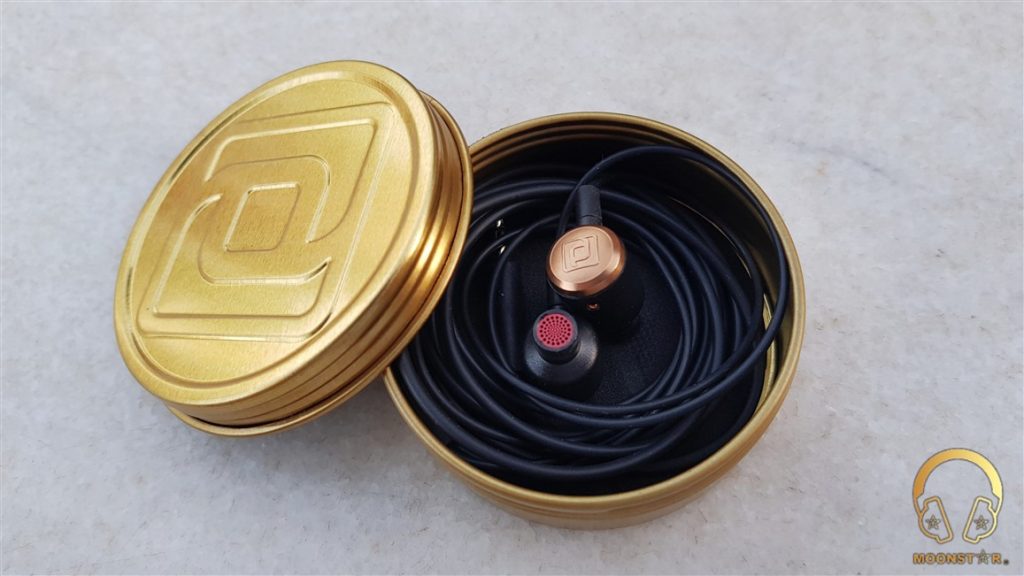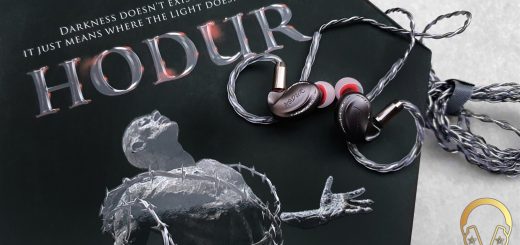Periodic Audio Be Review

Periodic Audio Be
The Beryllium In-Ear Monitor
Introduction:
Periodic Audio is a US company located in Oxnard, California which was established in 2016 with the vision to make high quality portable audio products, with the focus only on the products.
There motto is “Don’t spend money on anything that didn’t add to the central promise of an in-ear monitor: great music wherever you go”.
Periodic Audio has released 3 IEM’s that are using different type of driver materials. The naming scheme of this In-Ear Monitors is inspired by the material shortcut listed on the periodic table. The Mg is using Magnesium, the Ti is for Titanium and Be is for the Beryllium foil diaphragm, which are all manufactured in-house. The Periodic Audio Be is the top model of this company.
Periodic Audio Official Website: http://periodicaudio.com/
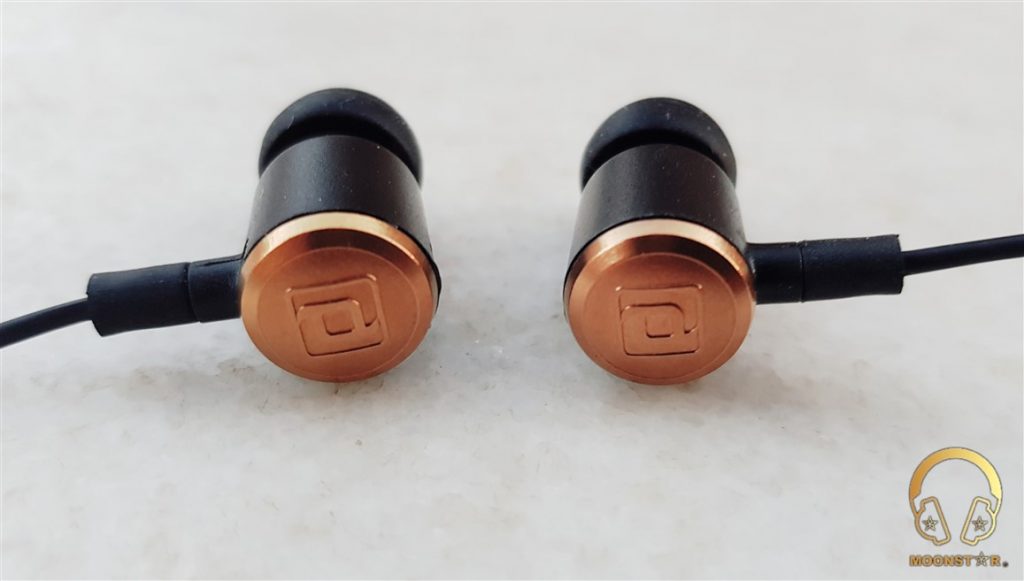
Disclaimer:
The Periodic Audio Be In-Ear Monitor was provided to me by Periodic Audio as a review sample. I am not affiliated with Periodic Audio or any third person beyond this review and these words reflect my true, unaltered, opinions about the product.
Price and Warranty:
The Periodic Audio Be is available on Periodic Audio’s e-shop under the following link for $299.00. The limited warranty is five (5) years, which I find gorgeous.
Purchase link: http://periodicaudio.com/Be.html
Package and Accessories:
The Perodic Audio Be comes in a simple white cardbox, which is containg the following items;
- 1 x Periodic Audio Be In-Ear Monitor
- 3 x pairs of double flange eartips
- 3 x pairs of biflange eartips
- 3 x pairs of foam eartips
- 1 x 3.5mm to 6.3mm Adaptor
- 1 x flight adpter
- 1 x Golden tin case
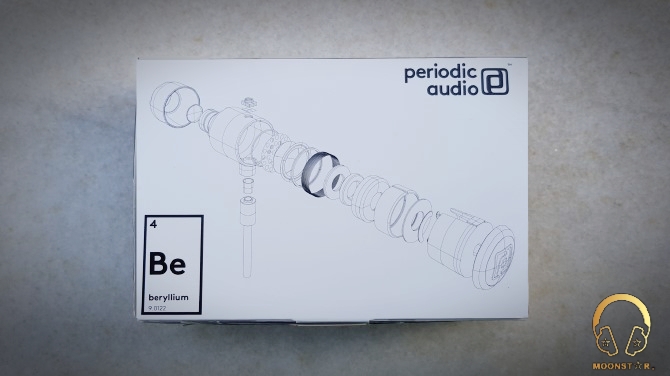
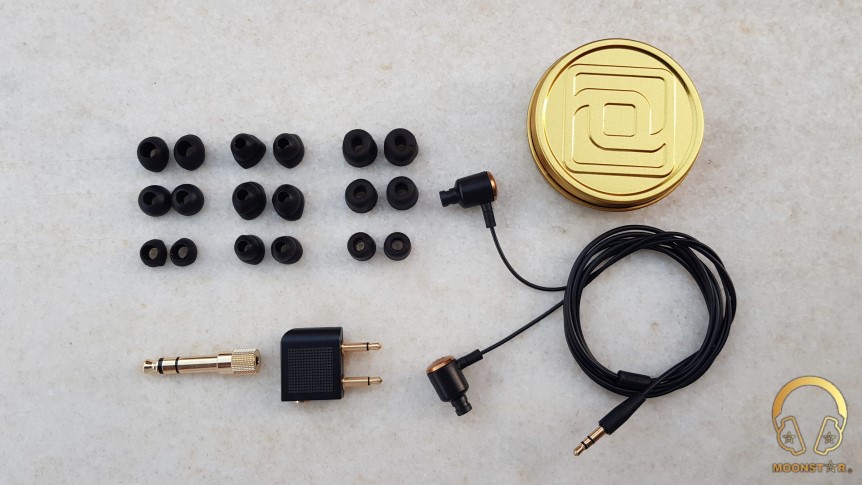
The Periodic Audio Be comes with loots of silicone (bi and double flange) and foam eartips that all are quite soft and comfortable to wear.
The package is also including a flight and 3.5mm to 6.3mm adaptor.
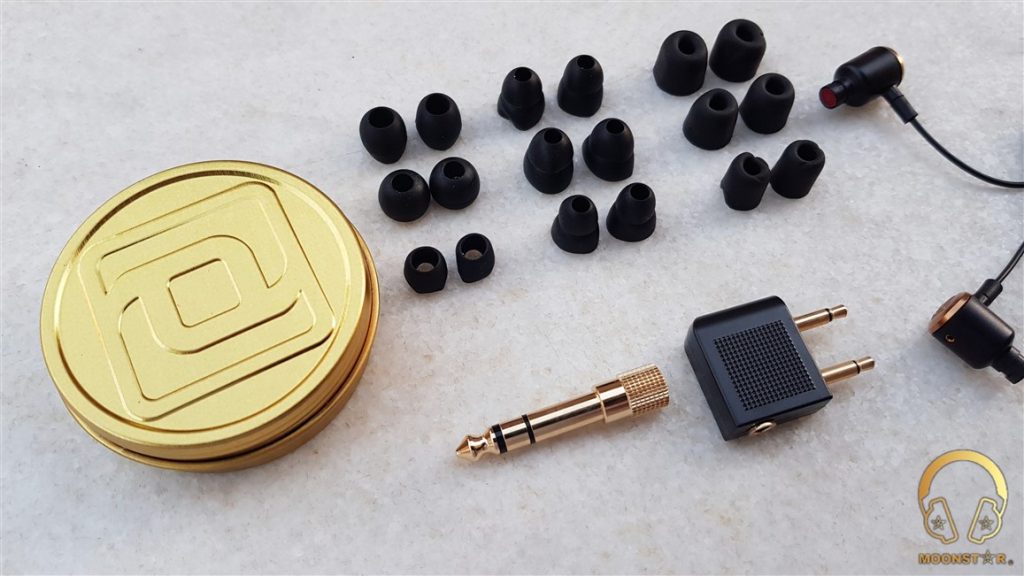
There is a also tin case in golden color which sports the Periodic Audio logo. The inner side of this case has a velvet coating which should protect the Be from any scratches.
Design and Build Quality:
The Periodic Audio Be has a very minimalist bullet style housing which is made of polycarbonate plastic material for high strength and zero resonance, which looks and feels durable. The back of the monitor sports the Periodic Audio logo which is the only part on the monitor that is made of metal. On the top of each Beryllium IEM is one bass vent.
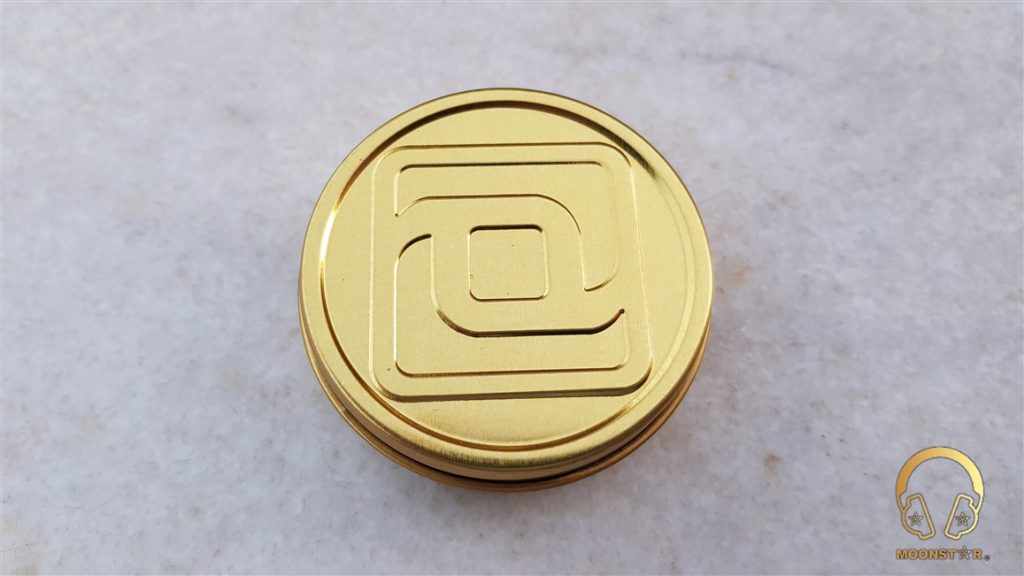
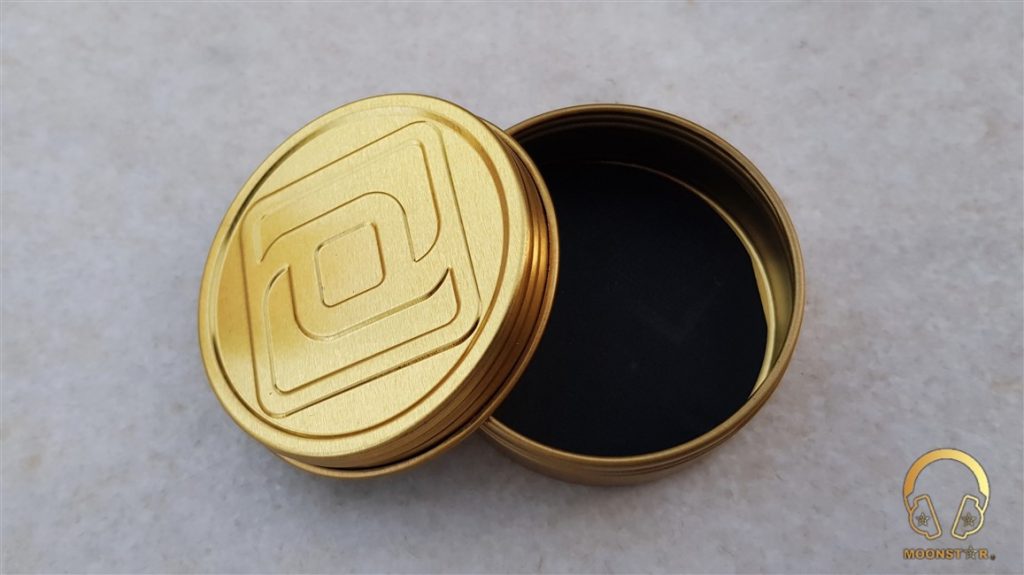
There is a also tin case in golden color which sports the Periodic Audio logo. The inner side of this case has a velvet coating which should protect the Be from any scratches.
Design and Build Quality:
The Periodic Audio Be has a very minimalist bullet style housing which is made of polycarbonate plastic material for high strength and zero resonance, which looks and feels durable. The back of the monitor sports the Periodic Audio logo which is the only part on the monitor that is made of metal. On the top of each Beryllium IEM is one bass vent.
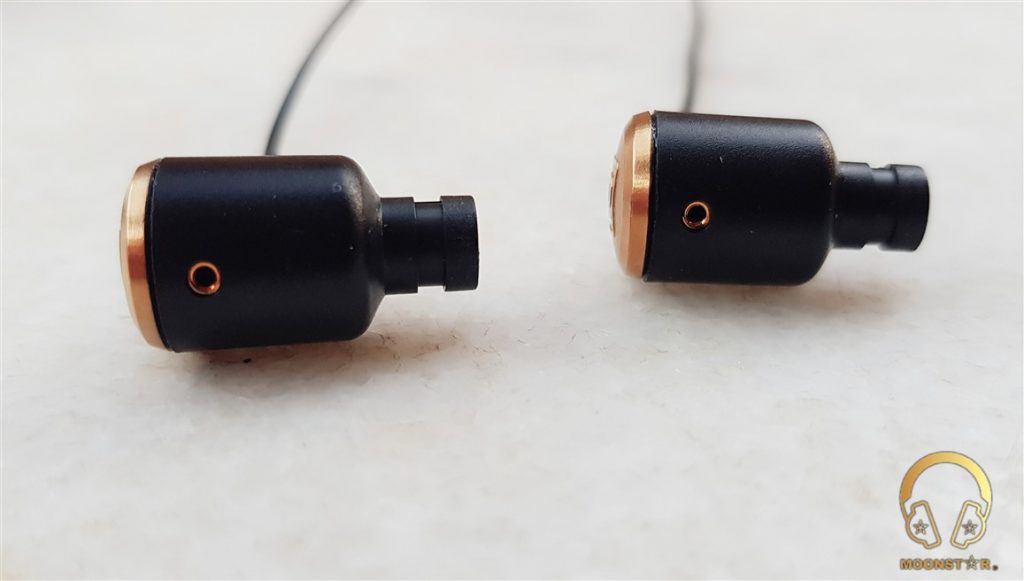
On the front of each nozzle is a dust filter, which serves also as left and right indicator due the red (right) and black (left) color combination.
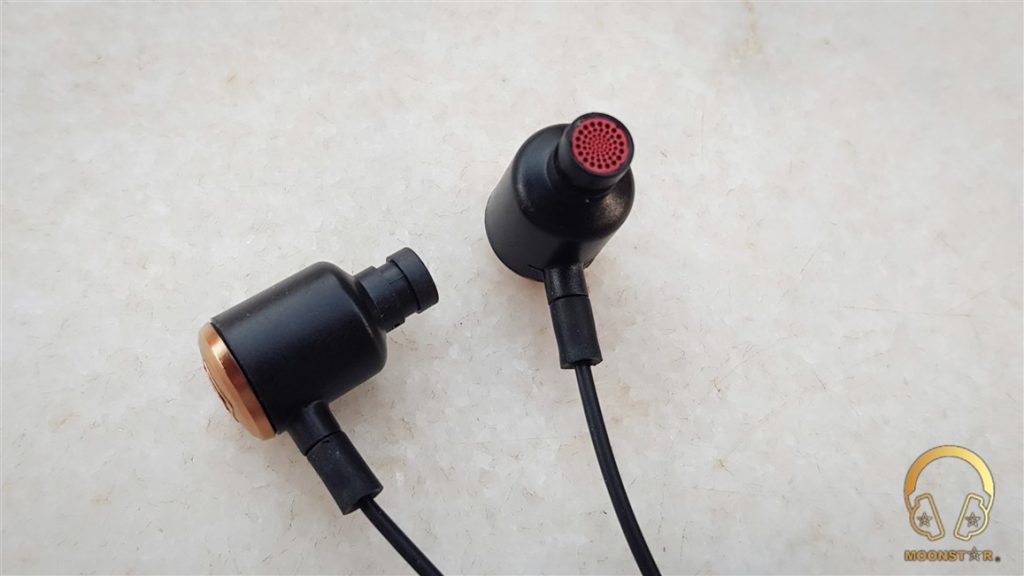
The Periodic Audio Be has non detachable cables, which means you have no upgrade option. The cable has a length of 1.5mm and is protected by a soft TPU coating.
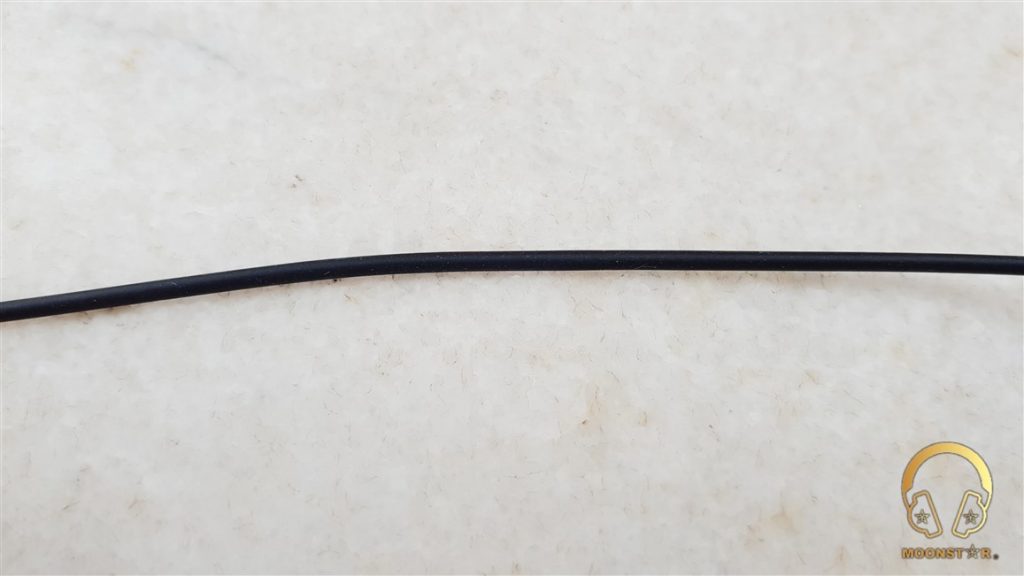
They strain reliefs are made of butyl rubber, which should protect the cable and the five (5) years of limited warranty is a good addition. The cable is a bit thin and makes a very minimalist appearance.
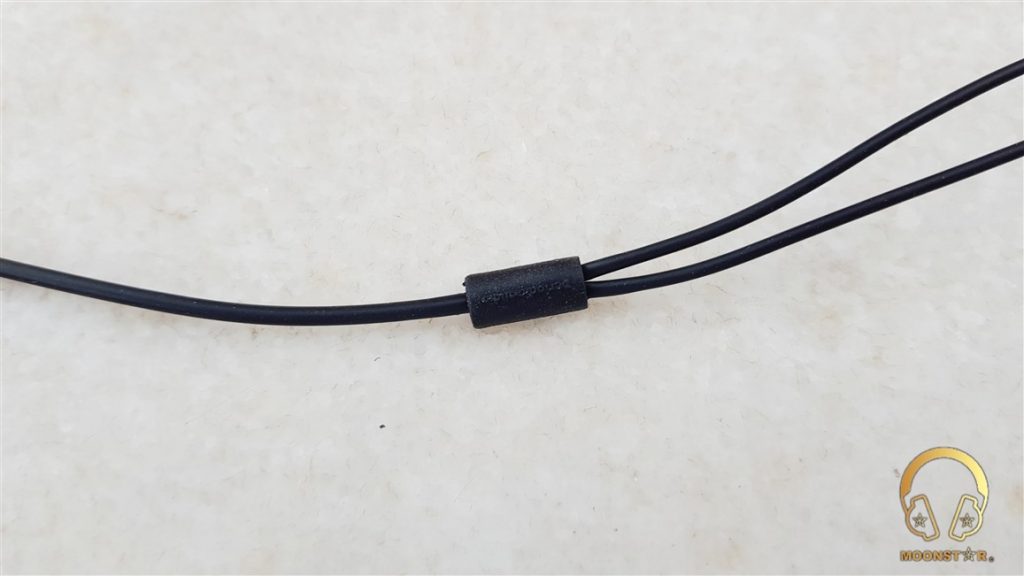
The 3.5mm headphone jack has a straight profile and sports a single ended, gold plated connector.
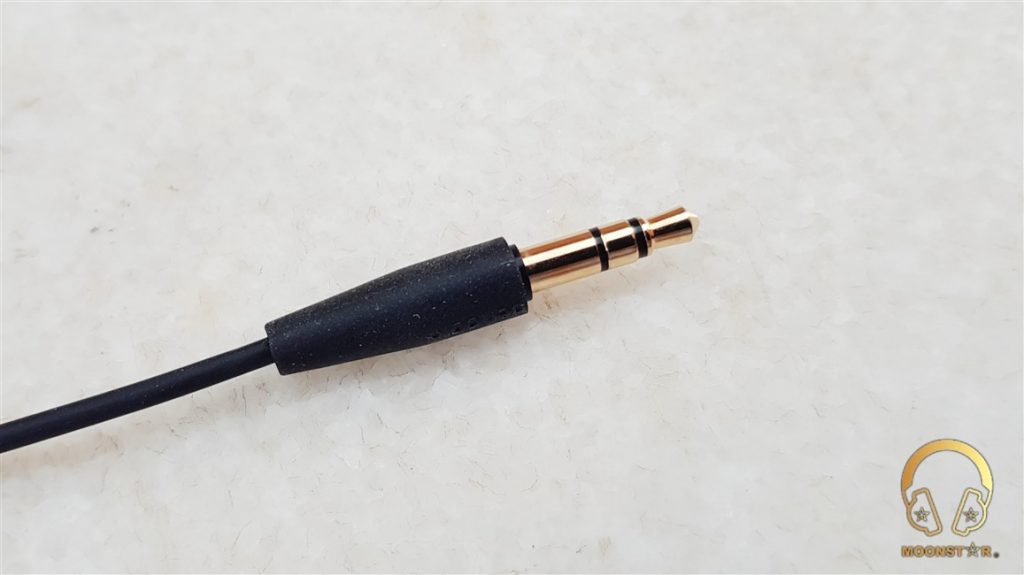
Fit, Comfort and Isolation:
Each monitor has a weight of 2.8gr and a total weight of 9.3gr (inclusive cable) that makes is very to a very lightweight In-Ear monitor. The Periodic Audio Be is comfortable to wear with and above average isolation, which should be good enough to use it in the public.
Features:
The Periodic Audio Be has a single dynamic driver with a 100% pure beryllium foil diaphragm, a bonded PEEK surround and N48H grade magnet. All components inside this In-Ear Monitor are 100% designed and tooled in-house by Periodic Audio.
Technical Specifications:
a) Performance:
- Frequency Response : 12 Hz to 45 kHz
- Impedance : 32 Ohms nominal
- Sensitivity : 100 dB SPL @ 1mW in ear
- Power Handling : 200 mW continuous
- Peak SPL : 123 dB
- THD : Less that 1% THD @ 1mW
b) Material Properties:
- Melting Point : 1560 Kelvin
- Speed of Sound : 12890 meters/second
- Young’s Modulus : 287 Gigapascals (for information wikipedia)
- Brinell Hardness : 1320 Megapascals (for information wikipedia)
c) Physical Properties
- Cable Length : 1.5m
- Mass : 2.8 / 9.3 g (IEM/Set)
- Op. Temperature : -20 to +50° C
- Operational Humidity : 0-95% Relative Humidity
- NRR : 31.3 dB (foam eartip)
- Overall Length : 21mm
- Body Diameter : 12 mm
- Nozzle Diameter : 6 mm
Frequency Graphic:
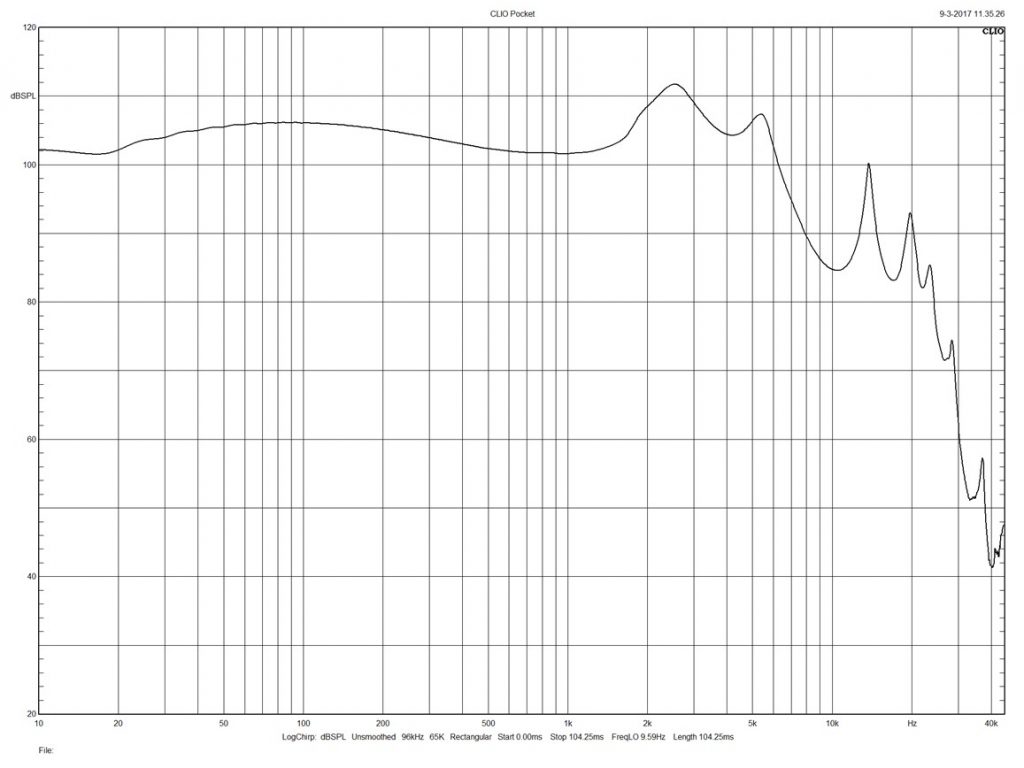
Drivability (Impedance):
The Periodic Audio Be IEM is quite sensitive IEM, which make is to a easy to drive gear. The nominal impedance is 32 Ohm and is suitable for the use with portable sources like Smartphones, Tablet’s or DAP’s without the need of any amplifier.
Sources:
a) In Ear Monitor : Periodic Audio Be, Lear LUF Kaleido, Dunu Falcon C
b) DAP/DAC : Cayin N5II, Audirect Beam, Chord Mojo, Hidizs DH1000
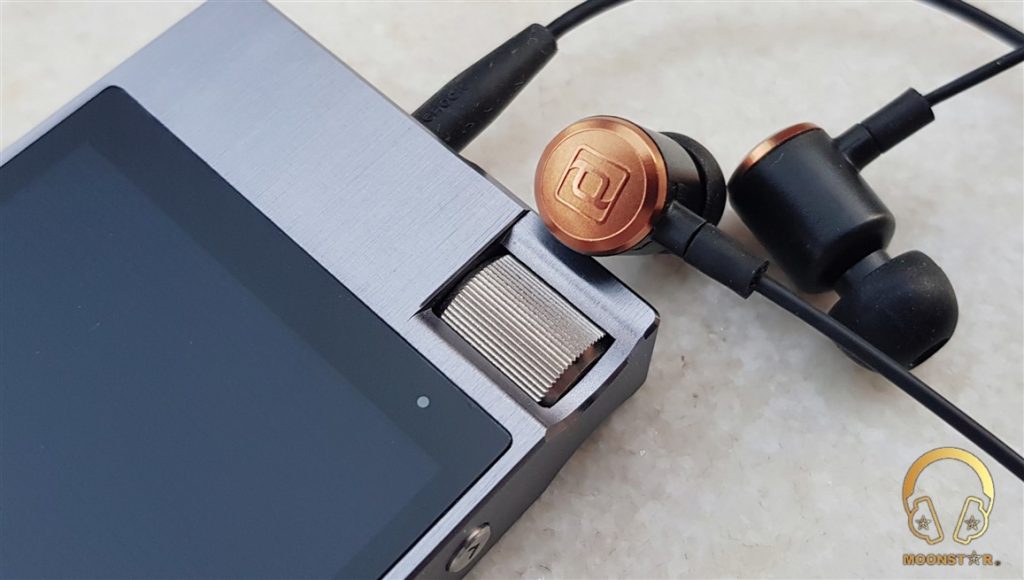
c) Albums & Tracks used for this review:
- Steve Srauss – Mr. Bones (Flac 16bit/44kHz)
- Dire Straits – Money for Nothing (DSD 64)
- Gothart – Jovano, Jovanke (Spotify)
- Otto Liebert & Luna Negra – The River (DSF) – Binaural Recording
- GoGo Penguin – Fanfares (Tidal Hi-Fi)
- Casey Abrams – Robot Lover (Tidal Hi-Fi)
- Sertab Erener – Aşk (Spotify)
- Jehan Barbur – Yollar (Spotify)
- Minor Empire – Bulbulum Altin Kafeste (Spotify)
- London Grammar – Interlud (Live) (Flac 24bit/44kHz)
- Liquid Tension Experiment 2 – Acid Rain (Spotify)
- Opeth – Damnation (Tidal Hi-Fi)
- Megadeth – Sweating Bullets (Flac 16bit/44kHz)
- Metallica – Sad But True (Flac 24bit/96kHz)
- The Glitch Mob – Mind of A Beast (Flac 24bit/96kHz)
- Lorde – Team (Flac 24bit/48kHz)
- Tom Player – Resonace Theory “Album” (Tidal Hi-Fi)
- Deeperise feat. Jabbar – Move On (Spotify)
Sound Analysis and Comparisons:
Please note that this review is written after a burn-in process of approx. 100 hours. I have use the double flange eartips that where included to the package.
a) Sound Signature and Tonality:
I can describe easily the Periodic Audio Be as an IEM with a U shaped sound signature, which has a warmer then neutral tonality.

b) Bass:
The Periodic Audio Be has some strong and even bass, which extends pretty well. The sub-bass area is reaching to a quite low register and the bass has some nice rumble without to overshadow the whole sound spectrum.
The mid-bass of the Periodic Audio Be are prominent, but sounds in most situation quite controller. There where some minor control issues at the very beginning (first 10 – 50 hours), especially with some bass heavy tracks like The Glitch Mob’s – Mind of A Beast, which is now much better after a burn-in of 100 hours.
The overall bass speed is satisfying with genres like EDM, Trance, POP, etc. but is a bit slow in some situations, like in the complex song of Liquid Tension Experiment 2’s “Acid Rain” which is my new reference track regarding for the performance of speed and control.
c) Midrange:
The midrange of the Periodic Audio Be is quite warm and smooth due some mid-bass emphasis, but it doesn’t sound overly thick or too thin.
Instrument and vocals have a full bodied presentation and both male and female vocals sounding intimate and quite emotional. The vocal performance of Sertab Erener’s song “Aşk” sounds pretty controlled, nearly sibilance free and natural. The separation and definition of instruments is above average and there is a quite clear presentation.
The Be is not a detail monster and reference IEM for critical listening, but is has some pretty good detail retrieval, which will satisfy many users at this price point. My only complain could come to the missing of a hint of transparency and airiness in this area, which is a matter of personal preference.
The Periodic Audio Be has a upper midrange emphasis, which adds some nice dynamics to the sound, but the good thing about the Be is, that there is no any remarkable sibilance and harshness at this area that could be a result of the Beryllium diaphragm. The Be sounds pretty controlled in this and is surprisingly suitable for long listening periods, due the fatigue free presentation.
d) Treble:
The treble range of the Periodic Audio Be has some boost around the 6 kHz mark which is adding clarity and definition to the overall presentation. The detail level and treble extension of the Periodic Audio Be is also quite good.
The treble presentation around this range was slightly aggressive for the first 10- 40 hours, which sounds now much more controlled, especially after the use of the double flange eartips which has smoothed out the overall presentation.
The upper treble range has some roll off, especially around the 10 kHz range, which is a avoiding any treble harshness in return of the missing of some air and sparkle. The good thing about this tuning is that it allows the listener a fatigue free listening, even with some songs like Metallica – Sad But True. The speed and control is pretty good and should impress many users, especially regarding to the price.
e) Soundstage:
The Periodic Audio Be has a nice 3D like soundstage presentation that expands quite natural in both directions. The main difference is that there is slightly less depth then wide. The placement of vocals and instruments is natural and precise.
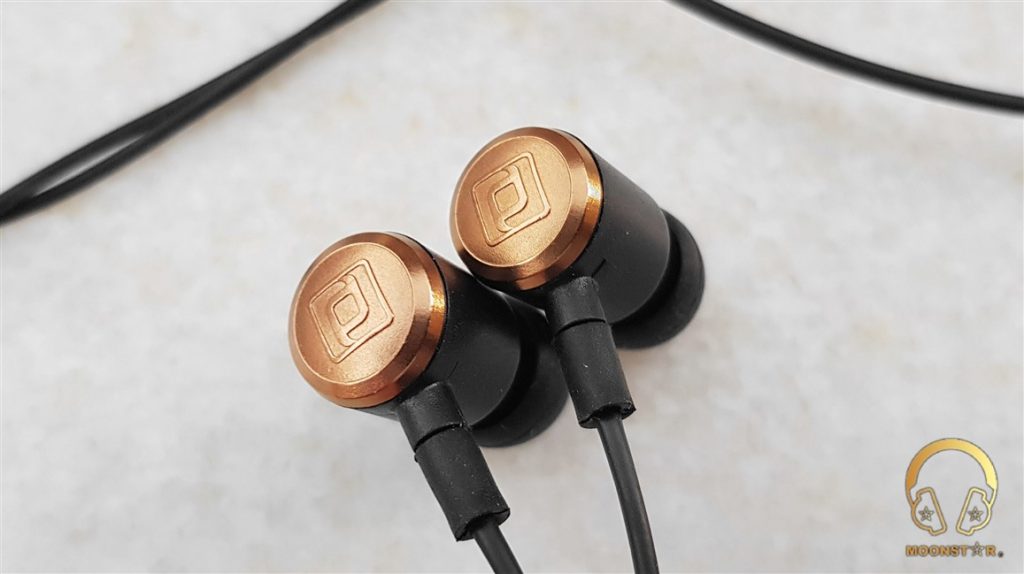
Comparisons:
Vs. Lear LUF Kaleido:
The first noticeable difference between this two IEM’s is the bass character. The Lear LUF Kaleido has even more sub-bass rumble than those of the Periodic Audio Be. The sub-bass of the LUF Kaleido are reaching to a lower register while the Periodic Audio Be has the upper hand for speed and control.
The bass of the Periodic Audio Be has slightly more extension and doesn’t sound as warm as the LEAR LUF Kaleido.
The mid-bass region of the LUF Kaleido has slightly more impact, while the Periodic Audio Be has better bass decay. The Lear LUF Kaleido sounds a bit muddy and muffled in this area, while the Periodic Audio Be has addition clarity and control.
The LEAR LUF Kaleido has one of the warmest midrange presentations in my In-Ear collection. The midrange of the LUF Kaleido sounds fuller and warmer then those of the Periodic Audio Be which is already a quite warm sounding IEM. The Periodic Audio Be has also additional clarity and transparency in comparison to the softer sounding Lear LUF Kaleido.
The vocals and instruments are sounding a bit more emotional with the Lear KUF Kaleido, while the Periodic Audio Be has additional detail. The LUF Kaleido sounds slightly more controlled and is less sibilant in the upper midrange compared to the Beryllium IEM.
The Periodic Audio Be sounds brighter and shares some additional air in the treble range, compared to the Lear LUF Kaleido, which is missing some sparkle. The treble of the Beryllium IEM has better extension, while the speed performance of both IEM’s is nearly identical.
The upper treble range of the LEAR LUF Kaleido is slightly more controlled and has also a smoother presentation. The Periodic Audio Be shares slightly more detail in this area and sounds also more lifelike due the boost around the 12 kHz range.
Both IEM’S are pretty good regarding to soundstage performance. The LUF Kalido and Be have nearly the same depth performance, while the Periodic Audio Be has the upper hand for soundstage wideness.
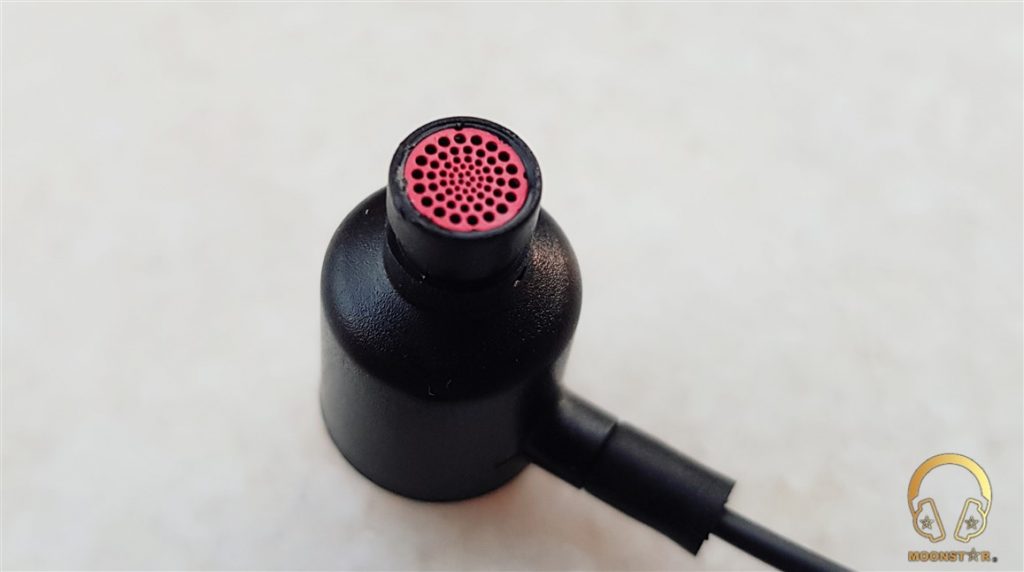
Vs. DUNU Falcon-C
The Dunu Falcon-C has a V shaped and the Periodic Audio Be a U shaped sound signature. Both IEM’s have a strong sub-bass presentation which extends quite similar. The Periodic Audio has slightly better control in this area, while the Dunu Falcon-C is reaching to a lower register.
The bass of the Periodic Audio be has more impact with a quicker decay and has also a more dynamic presentation. Both IEM’s sharing a nice sense of power, while the Be has better control in some bass heavy songs.
The Periodic Audio Be sounds fuller and has also more mid-bass slam than those of the DUNU Falcon-C, which is a result of the boost in this area. The Dunu Falcon-C has the upper hand for clarity and sounds slightly more control in the bass department.
The midrange of both IEM’s sounds quite detailed at a price range between 200 – 300 USD, while the Periodic Audio Be sounds slightly warmer and thicker in this area then those of the DUNU Falcon-C. The Falcon-C’s midrange sounds a bit recessed end thin due the V shaped sound signature and missing of warmness & fullness due its mid-bass tuning. Period Audios Be’s vocal and instrument presentation is quite forward due the U shapes sound signature.
The Dunu Falcon-C on has the upper hand for clarity and transparency in the midrange but is missing some emotion and romance that the Beryllium diver IEM has.
The Periodic Audio Be sounds smother and controlled in the upper midrange and is less pron to sibilance and harshness then the DUNU Falcon-C.
The DUNU Falcon-C has a slightly brighter and airier presentation with addition sparkle on the top end. The Periodic Audio Be on the other hand sounds less bright and has the upper hand for control and extension, with its more natural like presentation.
The Dunu Falcon-C sounds detailed and has a pretty good resolution for a mid-fi IEM, but sounds a bit thin and unnatural compared to the Periodic Audio Be, which shares additional micro detail and more natural presentation. The Dunu Falcon-C has more stress in the upper treble area, than those of the Be and has some noticeable sibilance problems with mezzo-soprano voices like Sertap Erener
The soundstage performance of the Dunu Falcon-C is pretty good, especially when it comes to depth, which is a result of the midrange tuning. The Periodic Audio Be has a wider stage, while the Dunu Falcon-C offers slightly more air and depth for instruments.

Conclusion:
The Periodic Audio Be is a good choice if you are looking for a great bass performance and overall clarity of the sound. It is lightweight and comfortable to wear and ideal for long listening periods. The only downside could be the cable, which is not detachable, but please not that Periodic Audio offers a 5-year limited warranty.
Pros and Cons:
- + Great Bass performance
- + Good clarity and separation
- + Comfortable
- + Five (5) year limited warranty
- – Minimalist Packaging
- – Thin, non detachable cable
